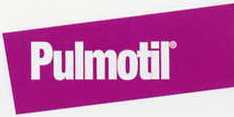NADIS Pig Disease Focus – April 2006
Ascariasis (Roundworm) in Pigs
There are a limited number of worm parasites that affect the pig in the UK. The most prevalent of these is Ascaris suum, most commonly associated with milk spot liver. Whilst severe infestations are generally only associated with the poorest levels of hygiene, modest levels of worms are seen commonly and have a significant effect on growth and feed efficiency.
Like all worm parasites, there is a complex life cycle with Ascaris suum. The adult worm – which can be up to 40cm long – lives in the small intestine of the pigs; in sows there may only be a few of these worms present. Each adult produces huge quantities of eggs intermittently and so examination of faeces for worm eggs can be an unreliable method of diagnosis.
The specific feature of the eggs of most significance is that they are covered with a sticky protective coat, which means that the egg will survive many years outside the body of the host. Its sticky nature makes it difficult to wash away by cleaning and allows very easy spread between units on animal and mechanical carriers. Birds are probably quite significant in the spread of the eggs. The protective coat also renders the egg very resistant to drying and disinfection. The only reliable methods of destroying the eggs are with fire (flame gun) or caustic soda. Oocide (Antec) may also be effective, although the nature of this product is such that it is difficult to use in the types of buildings where the eggs build up e.g. dry sow housing and grower sheds.
In the environment, the eggs undergo a maturation phase, which occurs more rapidly in higher temperatures but will take at least 2 weeks. This phase leads to the hatching of a larva, which will then be ingested by the pig. There is reason to believe that the sucking pig receiving milk is resistant to these larvae but the eggs can easily be picked up in the farrowing area, stuck to the body and then mature and infect after weaning.
Once the larva has been swallowed, it will begin one of its most destructive phases. The larva penetrates the wall of the intestine and migrate around the body specifically first to the liver and then to the lungs, all the while continually maturing. Eventually the larvae will be coughed up, re-swallowed and re-enter the gut to mature to adult worms. The whole life cycle will take a minimum of 8 weeks.
Clinical signs seen with Ascaris infestation will depend on the level of contamination and the site of the larvae or adult.
In the mild cases most commonly seen, the only evidence of the worms is at slaughter where white specks are seen on the liver, giving the term “milk spot”. The liver is condemned as a result.
Milk spot lesions are themselves transient and will resolve after 40 days. Therefore, if there is evidence of liver damage at slaughter, the problem must be occurring in the finishing area. Where liver damage is severe, weight loss, jaundice and death can occur, although more typically there is a reduction in growth of up to 10% and a degeneration in food conversion efficiency of up to 13%.
As the larvae migrate through the lungs, they will induce a cough, although this is often confused with Enzootic Pneumonia. Evidence of lung damage can be seen at slaughter, particularly noticeable in Enzootic Pneumonia free pigs.
With very heavy infestation in growing pigs, the young mature worms can block the intestine leading to vomiting, constipation, weight loss and death.
Control
Where Ascaris has been demonstrated as a significant problem, a rigorous cleaning programme is needed to reduce the levels of environmental contamination. Use of a detergent in the cleaning will help to break down the sticky coat of the egg, probably allowing eggs to be washed away. Conventional disinfection is unlikely to have must effect. Final treatment of a washed area with a flame gun is effective, allowing for the obvious health and safety concerns.
Worming of adult sows is necessary to stop further production of worm eggs, although alone is inadequate to control an established problem where environmental contamination is most significant.
Where treatment of growing pigs proves necessary, it is important that the product chosen is effective against the larvae as well as the adults. Such products include the Avermectins (Ivomec, Dectomax) and Flubendazole (Flubenol: Janssen). Obviously, care must be taken over withdrawal periods – particularly the injectable products.
Copyright © NADIS 2006 www.nadis.org.uk
While every effort is made to ensure that the content of this forecast is accurate at the time of publication, NADIS cannot accept responsibility for errors or omissions.
All information is general and will need to be adapted in the light of individual farm circumstances in consultation with your veterinary surgeon
| FURTHER INFORMATION | SPONSORS’ LINK |
| • Supporting British Livestock click here |
|
| FURTHER INFORMATION | SPONSORS’ LINK |
| • Supporting the british pig industry |
|
| FURTHER INFORMATION | SPONSORS’ LINK |
• To find out more |
|
| FURTHER INFORMATION | SPONSORS’ LINK |
• To find out more about |
|




